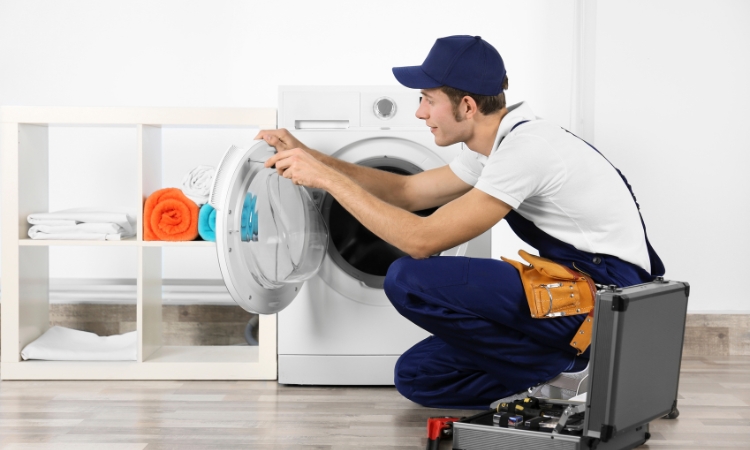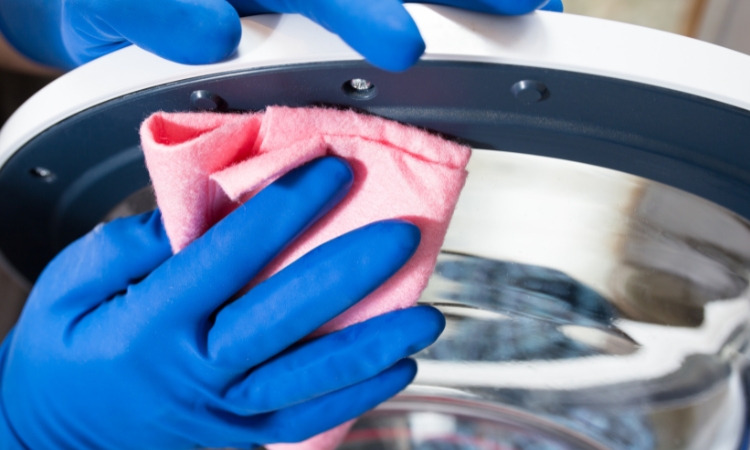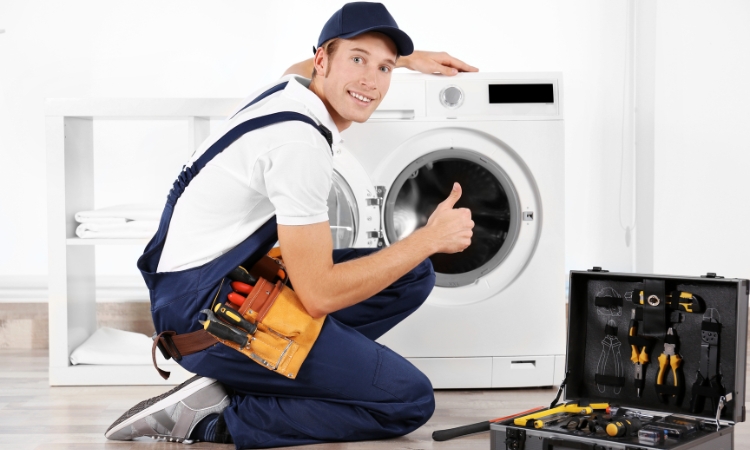Washing machines are the most commonly used home appliances as most people need to clean their clothes and bed sheets regularly. There are some common washing machine problems that almost everyone faces sooner or later. Therefore, this article is dedicated to a discussion of these problems and their possible solutions. If you are facing any of the following issues, this article is just for you:
1. Washing Machine Moves Around
2. The Washing Machine Is Leaking
3. The Washing Machine Is Noisy
4. Draining Problem
5. The Washing Machine Doesn’t Spin
6. The Washing Machine does not Fill with Water
7. The Washing Machine Door does not open
Most Common Washing Machine Problems and Their Solutions
Washing machine troubleshooting is a technical task, and it requires some skills to fix washing machine problems. Below are some of the most noticed issues and their solutions.
1. Washing Machine Moves Around
When you operate the washing machine, it vibrates and moves slightly, which is normal. However, if this movement becomes significant and loud, there is some issue with your machine. The primary cause for this issue often arises when the washing machine is not properly balanced on the ground. To resolve this issue, use a bubble level to ascertain if your washing machine is balanced.
If the machine is not balanced, readjust the legs of the machine accordingly. If imbalance isn’t the issue, the next probable cause could be malfunctioning suspension rods. Rarely, these rods may disconnect, resulting in excessive movement of the washing machine. If this is the issue, you will need to replace the suspension rods. You may need the assistance of some washing machine repair services expert.
2. The Washing Machine is Leaking
If your washing machine is leaking, begin your recovery operation by inspecting the external drain hose for any looseness or punctures. Run the washer when you observe the drain hose. You also need to check the internal components like the Tub-to-Pump and Internal Drain Hose by removing the access panel.
Common reasons for leaks include issues with the drain pump, which are usually damaged by foreign objects or pick-up cracks and loose connections. Damaged drain pump bearings may also be among the reasons. Some of the less common causes, like problems with the detergent dispenser, water inlet valve, and pressure switch, can also be the culprits. If these checks don’t resolve the issue, you may need to call a professional.
3. The Washing Machine is Noisy
Another common problem with the washing machines is their loud noises during operation. This is often because of objects like coins or debris bouncing around the inner side of the machine.
If this is the issue with your machine, remove the item to resolve the problem. However, if the noise persists and is caused by a faulty internal component, like the motor, it’s good to call a qualified technician for proper repair.
4. Draining Problem
If your washing machine is having drainage issues, it’s likely due to a blockage in the draining system, which is mostly caused by the filter. Filters can clog with suspended debris, leading to improper drainage. To resolve this issue, check the filter for blockages and, if found, clear them. Regular cleaning of the filter can prevent this in the future.

5. The Washing Machine doesn’t Spin
When your washing machine fails to spin, the problem may be simple enough to self-fix, or it may require a technician’s expertise. Firstly, inspect for overloading, a common issue that affects the washer’s ability to spin. If this is your problem, remove some of the stuff to resolve the issue. Because overloading can affect the speed of the motor inside the washing machine.
However, if the issue persists, it may involve a faulty internal component, such as the motor or the control board. To inspect and fix these components, you’ll need to dismantle the panels and use a multimeter. If you find any component failure, you will need to replace the faulty components. It is better to call a technician if there is a problem with some component.
6. The Washing Machine does not Fill with Water
If your washing machine is not filling up with enough water or not filling at all, start by inspecting the water hoses. These hoses can get blocked or kinked, causing the problem. Find the hoses and check for any blockages or kinks.
If you find any blockage, remove it and resolve the problem. Additionally, make sure that water is flowing through the taps properly; if not, it could be due to the main water being turned off or a water outage in your area. If you cannot do your washing machine troubleshooting, our Services may help you do that.
7. The Washing Machine Door does not open
Last on the list but not least for sure, if your washing machine’s door does not open, it is usually due to the washer still having water, preventing the door latch from releasing. This can be frustrating, especially when you need it to open urgently. The solution is quite simple, initiate a new cycle to drain the machine, allowing you to open the door. Once it opens, inspect the drain and filter any possible blockages.

If the door is stuck without water, it is likely due to a malfunctioning door switch or control board. If this is your problem, you should call a professional technician. Because these internal components require examination with a multimeter and subsequent repair or replacement, if you need our washing machine repair services, visit us on the Services page.
Conclusion
In conclusion, resolving the most common washing machine problems requires a mix of preventive measures and quick solutions. Regular maintenance and troubleshooting often prevent major issues, ensuring the machine’s better performance. For more intricate problems, seeking the professional assistance of a technician is important. By staying proactive and well-informed, you can prolong the life of your washing machine and keep it running optimally.
